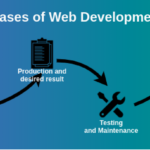
Email marketing is a powerful tool for businesses looking to connect with their audience, drive engagement, and boost conversions. However, to be truly effective, your email marketing strategy needs to be well thought out and executed. Here are some key strategies to engage your audience effectively through email marketing.
1. Understand Your Audience
The foundation of effective email marketing is a deep understanding of your audience. Conduct surveys, analyze data, and gather feedback to learn about their preferences, interests, and pain points. This knowledge will help you tailor your content and offers to meet their needs, resulting in higher engagement rates.
2. Segment Your Email List
Segmentation is crucial for sending targeted messages that resonate with different groups within your audience. Divide your email list based on factors such as demographics, past purchases, and engagement levels. This allows you to send personalized content that feels relevant to each recipient, increasing the likelihood of engagement.
3. Craft Compelling Subject Lines
Your subject line is the first impression your email makes. Create subject lines that are concise, intriguing, and relevant to the email content. Experiment with personalization, urgency, or questions to grab attention. A strong subject line can significantly improve open rates, so don’t underestimate its importance.
4. Personalize Your Content
Personalization goes beyond addressing recipients by name. Use data to customize your email content based on user behavior, preferences, and past interactions. Tailored recommendations, personalized offers, and relevant information create a more engaging experience for your audience.
5. Provide Valuable Content
Engaging emails should offer value to your subscribers. Share informative articles, helpful tips, exclusive promotions, or entertaining stories that align with their interests. The more value you provide, the more likely recipients are to open, read, and engage with your emails.
6. Utilize Interactive Elements
Incorporating interactive elements can significantly boost engagement rates. Consider adding polls, surveys, GIFs, or videos to make your emails more dynamic. Interactive content encourages recipients to engage with your email, making the experience more memorable.
7. Optimize for Mobile Devices
With a large percentage of emails being opened on mobile devices, ensure your emails are mobile-friendly. Use responsive design to make your emails look great on all screen sizes. Keep your content concise, use clear CTAs, and ensure links are easily clickable on mobile devices.
8. Include Clear Calls to Action (CTAs)
Every email should have a clear and compelling call to action that tells the reader what you want them to do next. Whether it’s visiting your website, signing up for a webinar, or making a purchase, make sure your CTA stands out and is easy to find.
9. Test and Analyze Your Campaigns
Regularly test different elements of your email campaigns to understand what works best for your audience. Experiment with subject lines, send times, content, and design. Use A/B testing to compare variations and analyze the results to continually refine your strategy.
10. Monitor Engagement Metrics
Keep a close eye on key engagement metrics such as open rates, click-through rates, and conversion rates. Analyzing this data helps you understand how your audience is responding to your emails and identify areas for improvement. Use these insights to adapt your strategy and enhance future campaigns.
Conclusion
Engaging your audience through email marketing requires a strategic approach that prioritizes personalization, value, and understanding of your audience’s needs. By implementing these effective strategies, you can foster stronger relationships with your subscribers, increase engagement rates, and drive conversions.






